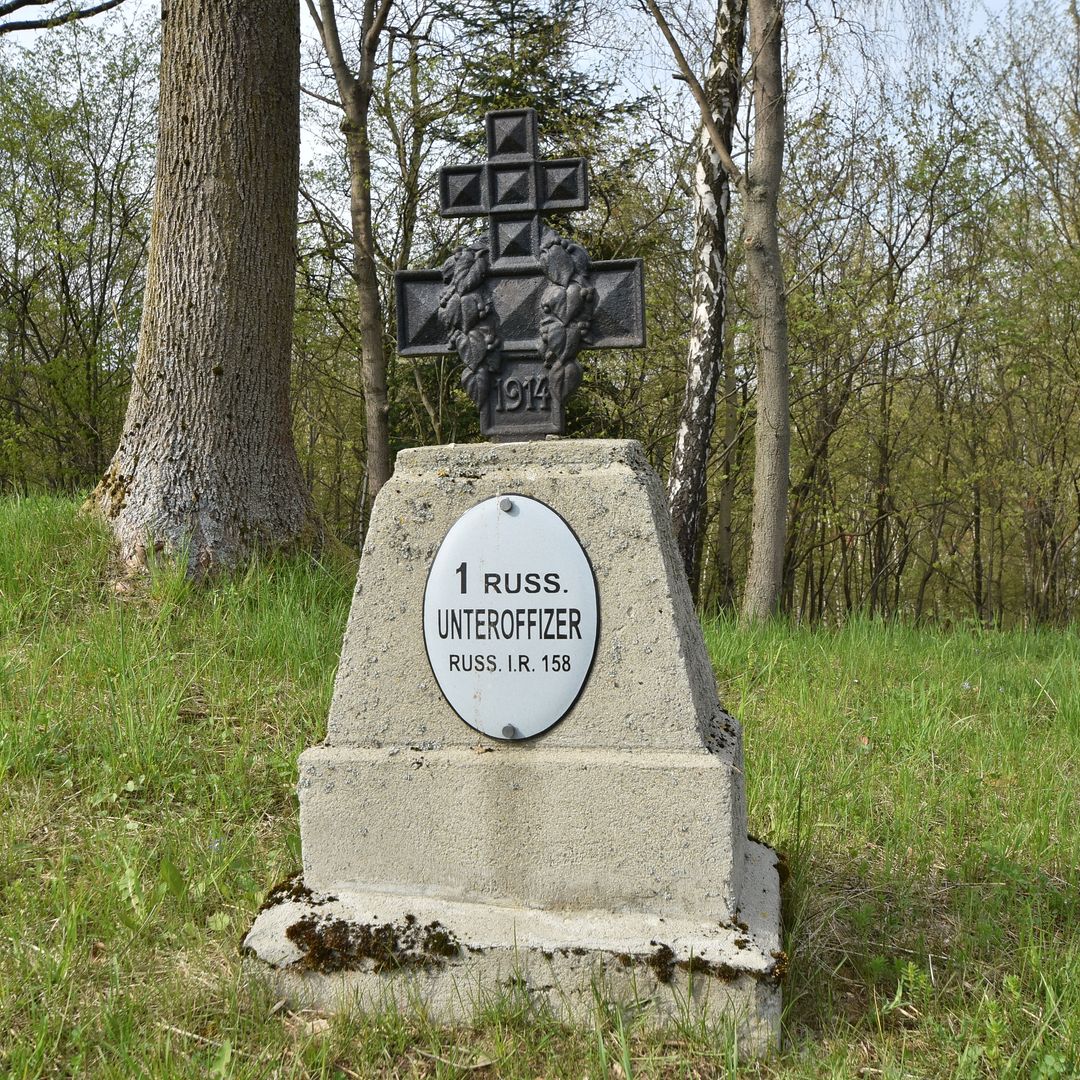War Cemetery No. 185 – Lichwin
7.38

Overview
War Cemetery No. 185 in Lichwin, located on Gródek Hill, is an important memorial site associated with World War I. Completed in 1916 on the initiative of Heinrich Scholz, the cemetery features an irregular heptagonal layout and is characterized by a strong, masonry monument in the shape of an ancient pylon. Among the preserved architectural elements, one can observe partial fencing, with a stone wall on the entrance side and informational plaques in two languages on the pillars. The monument and the soldiers' graves, arranged in rows, vary in the form of crosses and the nameplates of the fallen, creating a unique memorial complex. The cemetery, which still bears shell craters and trench lines, aims to remind visitors of the brutal realities of war. Its history also holds a poignant context—fierce battles were fought over this hill, particularly during the Battle of Gorlice, where on the night of May 3, 1915, Austrian soldiers captured the hill, only to lose and recapture it several times due to fierce Russian counterattacks. The cemetery is the final resting place for 614 soldiers from both armies, including Poles. Interestingly, the hill, now forested, was treeless during World War I and known as Sugar Loaf Hill. The cemetery, restored multiple times—most recently in 2012 through the cooperation of local authorities and associations—serves as an important commemorative site for the region, symbolizing tribute to those who fell in the war. A plaque at the entrance states, "The homeland has not forgotten its fallen sons," underscoring its cultural and historical significance. As one of the 400 West Galician war cemeteries, the Lichwin cemetery stands out as the largest in the entire Tarnów district, serving not only as a place of remembrance but also as an opportunity to reflect on the tragic events of World War I and their consequences.
Location
2025 Wizytor | All Rights Reserved